There are two tropical cyclones off the north west coast of Western Australia with Tropical Cyclone Seroja being the stronger of the two while the smaller weaker storm has been named Odette.
Both storms now appear to be circling one another and it appears that the smaller and weaker storm is poised to merge with the larger stronger storm - Seroja.
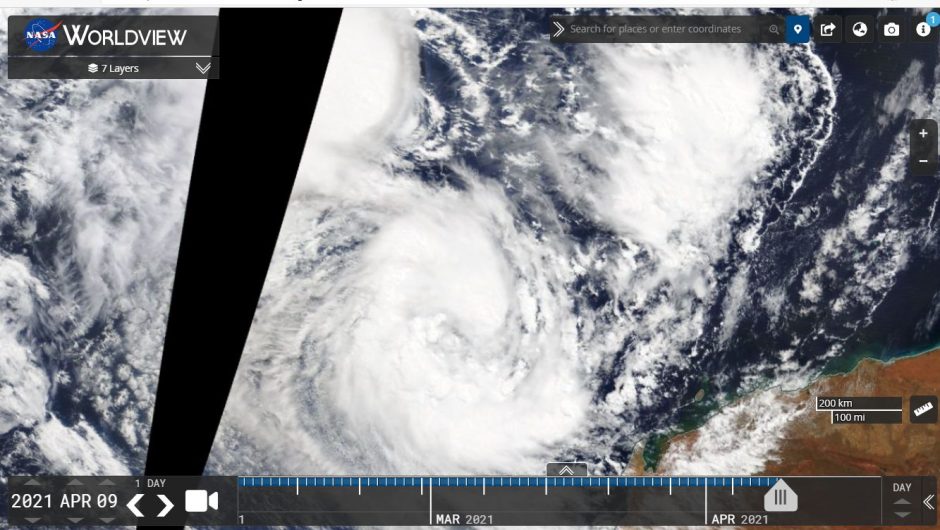
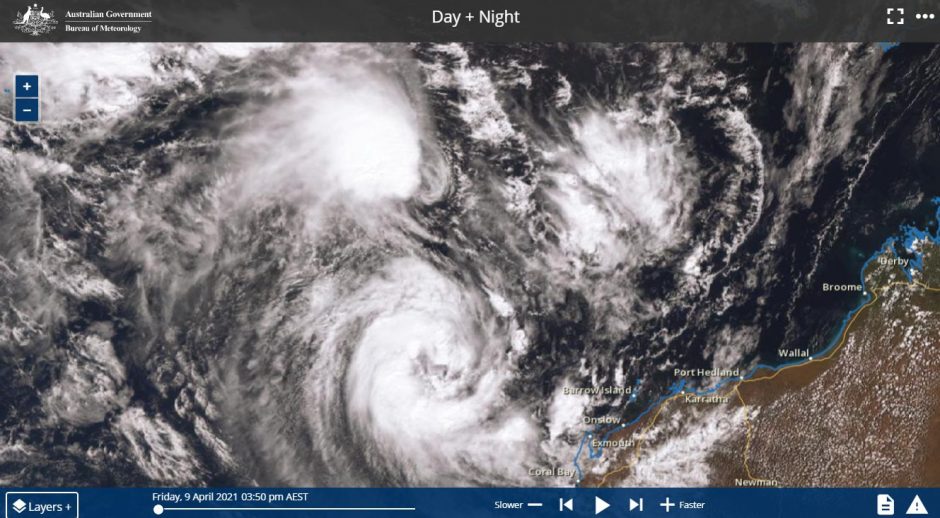
This is a very rare event to see within Australian waters.
According to Wikipedia, it was Sakuhei Fujiwhara who described the effects of two tropical cyclones being close to one another in 1921. The rare phenomena is termed the “Fujiwhara Effect” described as when 2 nearby cyclonic vortices start to move around each other, then close their distance between their corresponding low pressure areas. This can cause the two circulations to merge.
The storms engage in binary circulations when they are less than 1,400 km apart. The two vortices will be attracted to each other and spiral into the centre point then merge. If the two storms have unequal strength, the larger storm will dominate over the weaker storm.
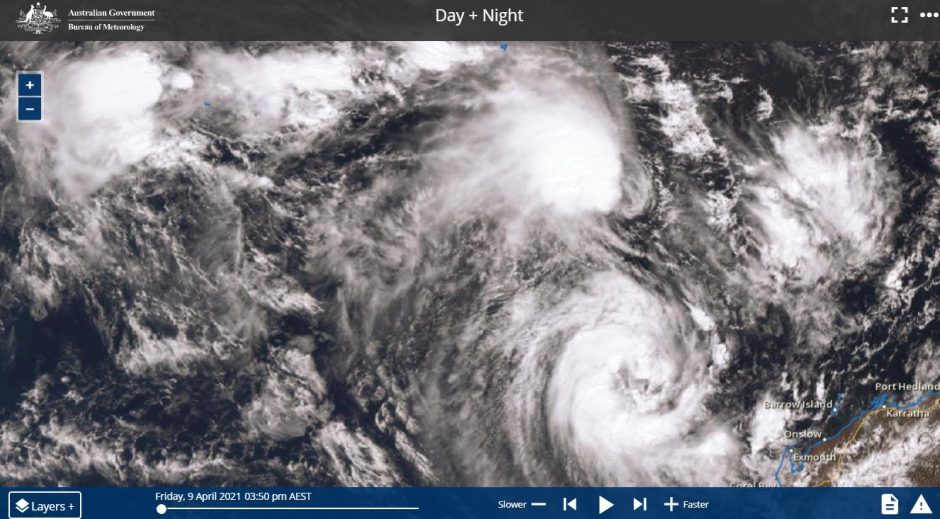
This is what appears to be occurring as Odette closes the distance with Seroja. Tropical Cyclone Seroja is expected to dominate the system. However, this makes forecasting challenging and difficult.
It is noted that Tropical Cyclone Seroja may not reach a category 3 storm when compared to earlier models but is still expected to reach a strength towards the higher end of Category 1 or lower end of Category 2 during its final life span with peak wind gusts of 80 knots or approximately 150 km / hour. The storms have stayed offshore but a 1,000 km stretch of the western Australia coast is at risk from the storm as landfall is forecast between Coral Bay and Jurien Bay and there is a threat to Carnarvon, Denham, Kalbarri and even Geraldton.
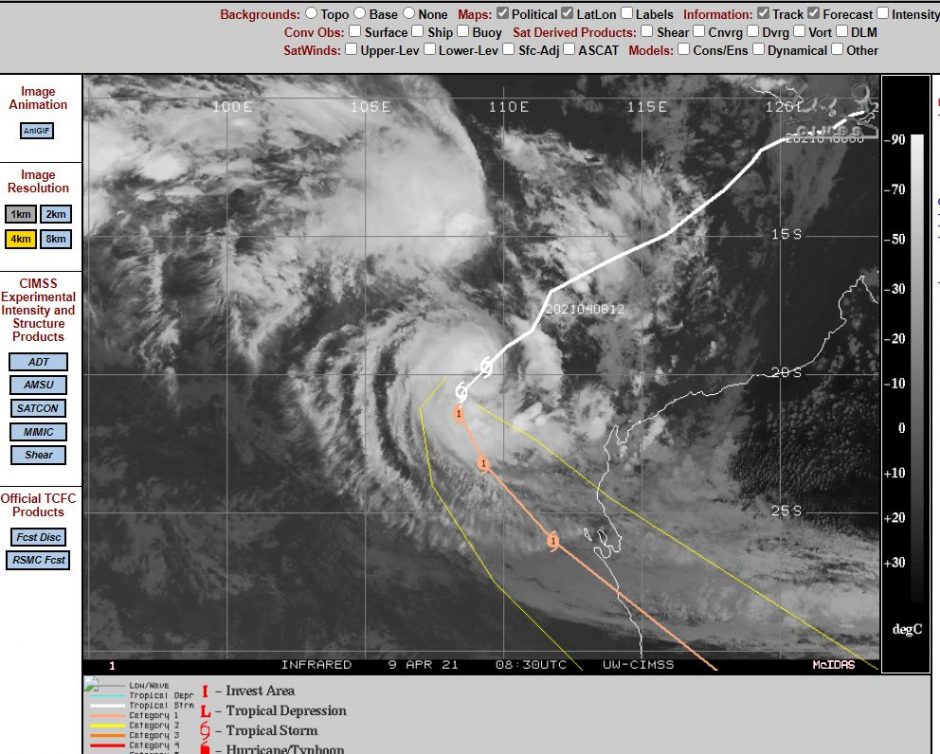
As seen in the Worldview image (NASA) taken the 9 April 2021, there are three storms in close proximity of one another however one has since decayed leaving Odette and Seroja as the remaining systems.
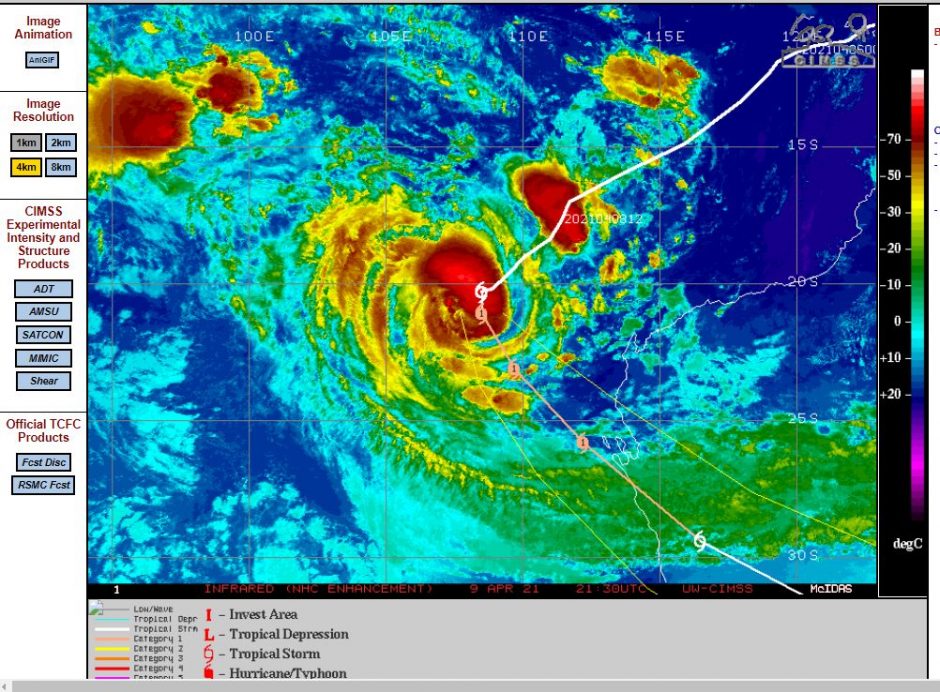
Whatever occurs now, Tropical Cyclone Seroja will not last too much longer because it will either make landfall or if not, it will decay over open ocean because ocean waters are significantly colder further south of its position and too cold to sustain a tropical cyclone.
